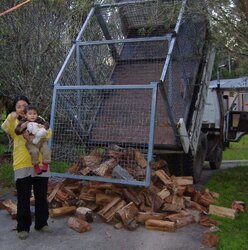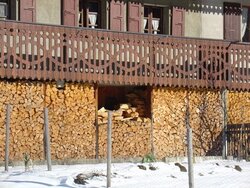I recently had a load of wood delivered and what I ordered is not what I received. However, with my wood, the driver handed me a piece of paper explaining exactly what I got to negate any argument I might launch. Bear with me, I live in France and you buy wood by the cubic-meter, also known as a "stere." I purchased 10 stere, the equivalent of 2.75 cords. I asked for the wood to be cut to 33 cm and split. After stacking the wood, I measured it to be exactly 7 cubic meters, not the 10 cubic meters I was expecting. However, the piece of paper the driver handed to me explained that I had purchased 10 cubic meters of uncut, unsplit logs a meter in length. When cut down to 33cm and split, as I requested, it equals 7 cubic meters - just as I had measured. (Likewise, the same amount of wood cut to 50cm and split will equal 8 cubic meter.)
I can justify that once cut and split, the wood might fit more tightly together, therefore decreasing its overall volume. But I lost 30 percent in volume. Does this sound right, and how is it done by the cord? Is a cord measured by wood that's cut and split, or by unsplit 4-foot lengths?
I can justify that once cut and split, the wood might fit more tightly together, therefore decreasing its overall volume. But I lost 30 percent in volume. Does this sound right, and how is it done by the cord? Is a cord measured by wood that's cut and split, or by unsplit 4-foot lengths?



 LOL )
LOL )
